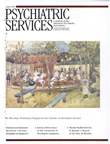Modifying the PACT model: preserving critical elements
Abstract
Few agencies have the resources to replicate the Program for Assertive Community Treatment (PACT) model pioneered in Madison, Wisconsin, which calls for around-the-clock, comprehensive treatment and rehabilitation services for persons with serious mental illness. Most agencies modify the model program, and little is known about patient outcomes in such altered programs. This paper discusses issues in modifying the PACT model, especially for use in rural areas. The authors focus on six basic elements of the PACT model: multiservice teams, 24-hour service availability, small caseloads that do not vary in composition, ongoing and continuous services, assertive outreach, and in vivo rehabilitation. They describe how programs in South Carolina that are adaptations of the PACT model have retained these elements and achieved desired outcomes with smaller teams operating on modified schedules.
Access content
To read the fulltext, please use one of the options below to sign in or purchase access.- Personal login
- Institutional Login
- Sign in via OpenAthens
- Register for access
-
Please login/register if you wish to pair your device and check access availability.
Not a subscriber?
PsychiatryOnline subscription options offer access to the DSM-5 library, books, journals, CME, and patient resources. This all-in-one virtual library provides psychiatrists and mental health professionals with key resources for diagnosis, treatment, research, and professional development.
Need more help? PsychiatryOnline Customer Service may be reached by emailing [email protected] or by calling 800-368-5777 (in the U.S.) or 703-907-7322 (outside the U.S.).



